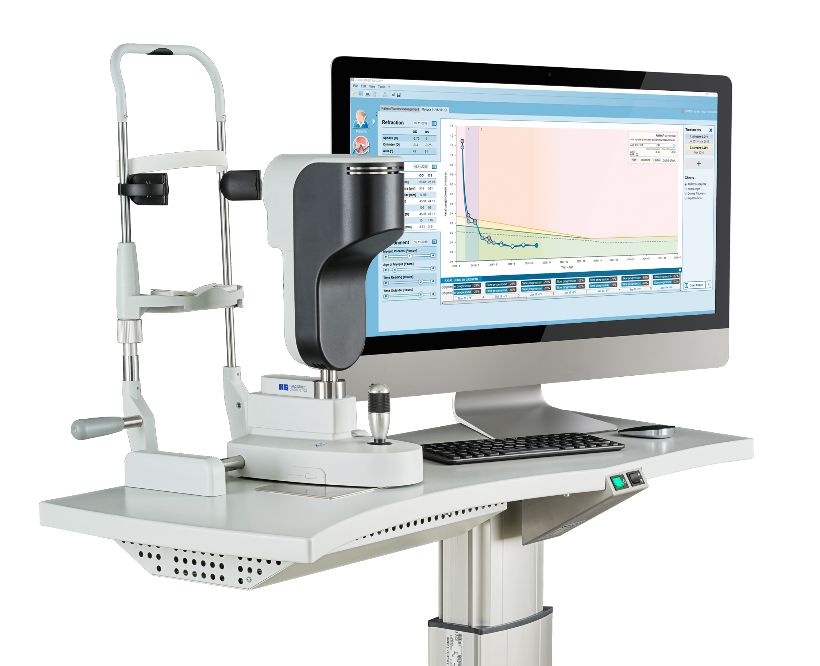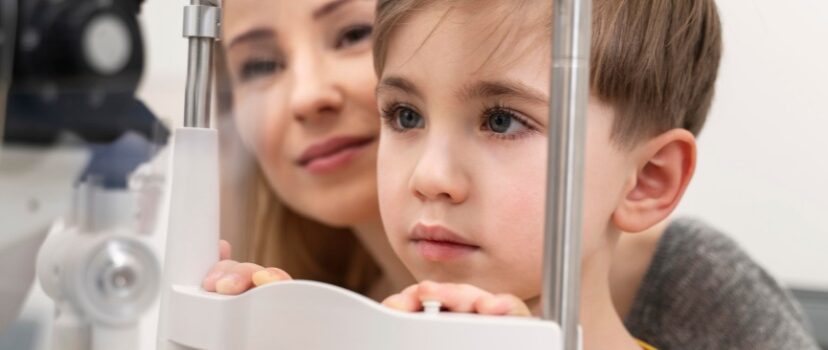Safeguarding children’s points of view
One of the most critical tools in managing myopia (short-sightedness) is the measurement and monitoring of axial length growth – the length of the eyeball from front to back.
Monitoring axial length growth
With our Lenstar axial length machine, our optometrists at John O’Connor can provide state-of-the-art care and keep a precise eye on the progression of your child’s myopia. We can
- Detect rapid eye growth early.
- Fine-tune treatment plans.
- Provide parents with evidence-based guidance.
Myopia: A growing Concern in New Zealand
In New Zealand, as in many parts of the world, myopia is becoming increasingly common among young people. Studies suggest that less time spent outdoors and increased near work activities like reading and screen use are contributing factors.
Proactive management can reduce the risks associated with severe myopia.
Myopia is more than just a prescription
Myopia is more than just needing corrective glasses or contact lenses to see properly. It tends to worsen over time as the eyeball continues to grow abnormally long, particularly during childhood and adolescence. This means light entering the eye cannot focus properly on the retina, causing distant objects to appear blurry.
Myopia not only means frequent changes to prescriptions, but unchecked progression stretches and thins the eye’s tissues, raising the likelihood of eye health complications later in life, such as retinal detachment, glaucoma, and myopic macular degeneration.:
- Retinal Detachment: As the eye elongates, the retina becomes more prone to pulling away from its support layers, potentially leading to vision loss.
- Glaucoma: Abnormally long eyes are associated with higher intraocular pressure, which can damage the optic nerve.
- Myopic Macular Degeneration: The macula, essential for central vision, may thin and deteriorate.
By focusing our care on slowing the underlying elongation of the eyeball rather than simply compensating for blurred vision, our optometrists can lower the risk of complications, and stabilise vision.

How we monitor axial length growth
At our practice, we use the Lenstar axial length machine to measure and track the growth of the eye. Regular monitoring, typically every six months for children, allows us to detect rapid axial growth and implement various myopia control strategies. This proactive approach enables us to intervene early, adjusting treatments as needed.
Effective myopia control may include:
- Atropine eyedrops: Proven to slow axial length growth, these drops are part of a dual therapy plan.If axial length measurements show rapid eye growth despite a single intervention, we may recommend combining treatments. For example, adding atropine drops to Miyosmart glasses or Ortho-K lenses may give better outcomes for some children.
- Miyosmart glasses: These clever lenses selectively filter harmful blue light while admitting natural daylight. Blurring what wearers see around the middle of the lens, encourages the side vision or peripheral vision to do a bit more work. This tells the eyeball to stop growing too ‘long’.
- Orthokeratology Lenses (Ortho-K): Worn overnight, these custom-fitted contact lenses reshape the cornea and reduce eye elongation. Wearers have clear daytime vision – no need for glasses.
Advanced myopia management
At John O’Connor Optometrists, we combine advanced technology, proven treatments, and personalised care to manage myopia progression effectively.
Taking proactive steps to control myopia progression can lead to improved vision and overall eye health, including children being outdoors for 2 to 3 hours per day and taking frequent breaks from close-up work.
Come and see us
Contact us today to schedule your child’s axial length measurement and learn more about how we can help safeguard their view ahead. If you have questions about treatment options for myopia, you can reach our Newmarket Optometrists at 09 522 1283 or our Henderson Optometrists at 09 836 1731. Alternatively, you can send us an email via our contact page. Our experienced optometrists will be delighted to schedule an appointment to discuss the best options for myopia management.

